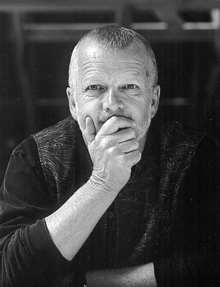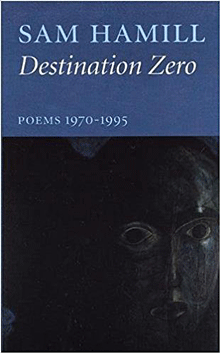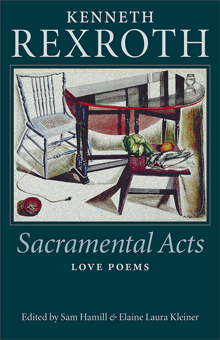Sam Hamill would have turned 75 on May 9. He had planned to celebrate his birthday with a publication party for his final book, After Morning Rain, on May 15, but in the end he realized that his health wasn’t going to last long enough to do it. Sam died a month before the planned event. It went ahead, however, on a more informal basis, as a remembrance and celebration of Sam and a welcome for his last book.
I’m now reading that book. I’ve been reading it slowly, parceling out the poems, making it last. It’s filled with little gems, of feeling, observation, appreciation, lament – the distilled sensibility of a poet at the end of his life. Sam always felt that he was in conversation with the great poets of the past, especially those of ancient China and Japan; some of the poems in After Morning Rain explicitly echo that:
Coming to It
A midnight cup of sake,
a strange solitude.
Is this all I’ve become?
Old and alone, bending
over a poem
written in loneliness
by some old Chinese
bag o’ bones
more than a thousand years ago.
The book is a small, beautiful volume, designed by and with a cover painting by Ian Boyden.
Sam was an evocative, insightful, lyrical poet, like his mentor Kenneth Rexroth. He was also, like Rexroth, a world-class curmudgeon. There’s bitterness, but also love, in Sam’s last poems. He transcended his own life through his work and his art.
Sam was an exacting and generous editor, and that’s where his greatest influence may lie. He co-founded Copper Canyon Press and was editor there for nearly thirty years, bringing innumerable books of fine poetry by greats and unknowns into print in the United States. That has been an important part of our cultural life.
I’m not sure when I first met Sam, but I came to know him when Loren MacGregor and I were publishing the short-lived Pacific Northwest Review of Books in 1977 & 1978. Sam was enormously helpful and encouraging to us in our efforts. I well remember the interview with Sam and his then-partner Tree Swenson that was conducted and submitted to us by a new writer; when we showed Sam the draft, he exclaimed grumpily, “I speak in paragraphs, dammit!” and insisted on correcting it – to the great benefit of our readers.
I’ve had the pleasure of designing several of Sam’s books, beginning with Passport, a collaboration with the artist Galen Garwood, which was published by Broken Moon Press in 1989. I’ve designed books of essays by Sam (Basho’s Ghost, A Poet’s Work) and poetry (Destination Zero). I always tried to give his work the typographical clothing that it deserved.
In 1993, I got a call from Sam, out of the blue. “Would you like to help me design a book?” He and Tree had just split up, and she had been the designer of Copper Canyon’s books. That early casual-sounding request led to my designing all of Copper Canyon’s books and collateral for the next five years (and several more at various times after that). As I said at the time, I was trying to live up to the standards that Tree had set, making each book recognizably a Copper Canyon book while letting each one take its own form and shape. And I was trying to maintain Sam’s vision with each book, often working with paintings that he had chosen for the covers. I like to think I succeeded reasonably well. I felt that those were books that would be worth reading a hundred years from now.
Ars longa, vita brevis.
[Images, top to bottom: After Morning Rain, designed by Ian Boyden; Sam Hamill; Destination Zero, designed by John D. Berry; Sacramental Acts, Kenneth Rexroth, designed by John D. Berry.]




